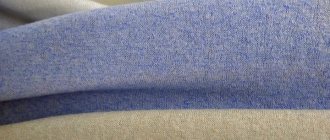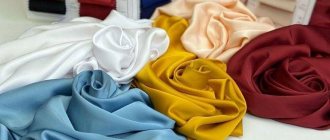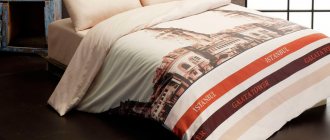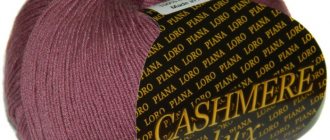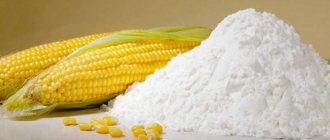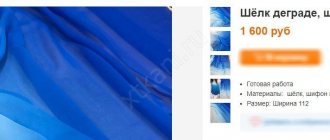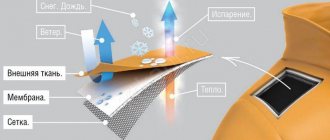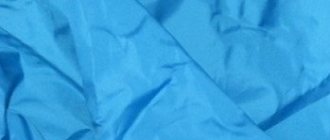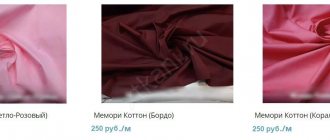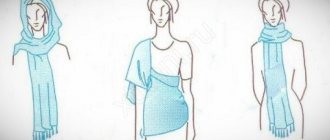Story
The revolution in women's wardrobe led to the division of the dress into a skirt and a blouse.
Initially, the French word blouson meant a jacket. In the 19th century, women received more rights and freedoms, as well as the opportunity to express themselves. Then a revolution took place in the ladies' wardrobe. The chaste dress was divided into a lower part - a skirt, and the top began to be called a blouse.
This item of clothing is decorated with a collar, cuffs, frills, ruffle and frill. The blouse must have sleeves. A variety is considered to be a blouse - an improved type of medieval clothing, blio, which centuries ago was used by both men and women.
To emphasize the femininity and beauty of the owner, blouses are chosen by color, style, shape and fabric. They use a huge number of materials - from satin to chiffon.
Men prefer shirts to blouses, so when sewing, they mainly use “feminine” decorative fabrics. Often designers combine materials, experiment with silhouette, style, shapes of sleeves and collars.
Let's take a closer look at the types of fabrics from which blouses are made. There are a lot of them, let’s list the most popular names and types of materials that can be freely purchased.
Description of fabrics. Main types and characteristics
Acrylic
A fabric that is often confused with wool due to its shared properties and similar appearance. But it is worth remembering that acrylic is a synthetic, not a natural material, which is produced from natural gas processing products. It comes in a wide variety of colors and shades, as acrylic fibers are easily dyed.
Alpaca
Wool of domestic artiodactyls, relatives of the vicuña. Alpacas are bred in South America. Warm, soft fabric that combines the best of camel and llama wool. Resistant to stains, do not wrinkle, maintain a comfortable body temperature.
Atlas
Silk fabric with satin weave. Smooth, pleasant to the touch, has a glossy shine.
Acetate
An artificial replacement for natural silk, which certainly differs in some properties. Outwardly, it is also shiny and soft, but it becomes electrified and quickly loses its elegant appearance. In hot weather, products made from such fabrics may be uncomfortable (unlike natural silk).
Velvet
Initially, silk fabric with a small thick pile. The base is made of plain or twill weave. Today, “silk” velvet is one that contains silk as a base and viscose as a pile. Velvet made entirely from silk is rare. Cotton is also used to make velvet, resulting in an equally luxurious fabric.
Batiste
A thin, translucent fabric made of linen or cotton with a plain weave, made from the finest twisted yarn. High density and lightness of the fabric is achieved due to the same thickness of weft and warp. This material was first mentioned in the 13th century; expensive cambric products were imported into medieval Europe from India.
Boucle
Loose, most often woolen fabric woven from bouclé, i.e. having large knots of thread. Knots and loops on the surface give the canvas an unusual texture.
Velveteen
A dense, weft-pile cotton fabric made from a fairly fine yarn. On the front side, the characteristic corduroy scars are noticeable, running along the warp threads.
Velours
A general group of materials with a fleecy surface resembling velvet. There may be confusion because in some countries this word is used to refer to velvet, while in others it is used to refer to corduroy.
Viscose fiber, viscose
Artificial fabric made from natural wood fibers using a chemical process.
Felt
Non-woven dense material made of felted wool.
Gabardine
The twill weave material, invented in the 19th century, is very dense, textured and durable, most often made from merino yarn.
Guipure
From the French word “guipure” - an openwork material with a relief texture, consisting of convex lace elements connected by mesh “ligaments”. It is a cohesive type of lace, more rigid and dense compared to other lace. Guipure lace is not produced on livery machines.
Tapestry
Decorative trellis, a woven pattern resembling a lint-free carpet. The original subjects of the drawings are ornate ornaments, biblical and ancient motifs.
Degrade
A dyeing technique that is achieved by gradually dipping fabric into dye or applying dye directly to the fabric so that the color gradually changes from light to dark or from one shade to another. This method is also known as dip dyeing, color flow, or gradual dyeing. The ombre technique is best suited for lightweight silk fabrics.
Atlas
Satin blouse
Smooth, smooth fabric with a shiny surface - satin. This material was invented in China and made from pure silk. To achieve the characteristic glossy shimmer of the fabric, a special technique of weaving threads is used - the warp goes around more than five weft threads.
Silk is a fairly expensive material to create fabric. Satin blouses are considered a luxury item, an element of a formal suit. The material adheres very gently to the skin, reminiscent of the touch of cool, refreshing water. To make the fabric more accessible, viscose, cotton and synthetic threads are added to the composition.
Advantages of a satin blouse:
- strength and durability;
- beauty and aesthetic appearance;
- good hygroscopicity (ability to absorb moisture);
- clothes will not shrink after washing and will not stretch;
- the material forms elegant folds;
- the fabric is not electrified and does not stick to the body.
When caring for a satin blouse, you should consider several points:
- It is necessary to protect clothes from exposure to high temperatures (dry away from fire and radiators, do not iron with a hot iron). Otherwise the material will shrink.
- The satin is not washed in a washing machine so that the drum elements do not leave any snags.
- You cannot rub or twist such a blouse, so as not to damage the fibers.
- Use mild detergents. It is allowed to add a small amount of vinegar to the water to preserve the color.
- Iron the blouse, turning it inside out, with a dry, warm iron (no steam).
- The item is stored in a closet on hangers, protected from high humidity and exposure to ultraviolet radiation.
Atlas is the material that monarchs and nobles wore. A satin blouse will become a real decoration of your wardrobe and is suitable for office work.
A substitute for satin can be satin - cotton or silk fabric with the same weave, soft, glossy.
What fabric to choose for sewing a blouse?
The variety of modern fabrics allows you to sew the most original and unique models. However, you need to remember that each fabric has its own purpose. For example, if one material makes a great jacket, this does not mean that it can be used to make a good blouse. Therefore, before you start sewing a blouse, you need to make sure that you have chosen the right fabric, and it will turn out to be a high-quality and good product.
Silk fabric. Smooth texture, elasticity and noble shine are an ideal choice for sewing an evening or classic blouse. Made from silk fabrics, even the simplest cut will look noble and elegant. However, do not forget that crepe de Chine, satin, and chiffon are very delicate fabrics and you need to work with them extremely carefully, without making unnecessary punctures with a needle during sewing, otherwise the fabric may “crawl” in this place. It is customary to wear a silk blouse on special occasions or under a classic suit for important meetings.
Cotton. Cotton blouses are distinguished by elegance and simplicity, and a wide range of colors allows you to break away from democratic snow-white models in favor of pastel colors and bright patterns. This blouse will become your lifesaver, in which you can go to work, wear it with your favorite jeans or add accessories, do your hair and go to some event. Typically, a business dress code allows for decorative elements such as ruffles, folds, puff sleeves, etc.
Lace fabric. A classic choice for sewing a feminine and elegant outfit. The most simple and loose cut of a blouse made of lace or guipure perfectly emphasizes the curves of a woman’s figure. Modern fashion suggests not using a lining, without which the underwear is visible; this looks especially impressive on a slender figure.
If previously lace products were worn only on special occasions, now they can be worn every day. A lace blouse goes well with almost all things, be it trousers, jeans, a skirt or shorts.
It is also perfect for office style paired with a classic pencil skirt or trousers, only lace or guipure should be in soft shades and with a dense texture. But be careful, a lace blouse does not tolerate a skirt or trousers with floral patterns, polka dots or geometric prints.
Linen. Do you want to look beautiful, elegant and stylish, but at the same time feel light and comfortable? - Then be sure to choose linen for sewing a blouse! It has the main undeniable advantage - it allows the skin to breathe and is a hypoallergenic material, which is extremely important for those with sensitive skin. You can wear a linen blouse every day without worrying that it will wear out, lose color or overall appearance, the main thing is to care for it properly.
Knitwear. The ability to take any shape, versatility and practicality have become key parameters that have brought knitwear into the category of leading popular fabrics. The pleasant flowing texture perfectly emphasizes the female figure, and the variety of cuts allows you to sew the most original and unique models. A knitted blouse harmonizes perfectly with any outfit, the main thing is to maintain the color scheme and overall style. If you want to correct some figure flaws, for example, make your hips slimmer, then choose light pastel colors for the blouse and dark solid colors for the bottom.
Batiste. Light, translucent and thin fabric is what you need for a summer blouse model. It is perfectly breathable, washes well, irons well and does not fade. Most often, a cambric blouse is sewn with a straight, elongated cut, with short sleeves or without them at all, if the dress code allows. Models without fasteners with a straight collar look stylish and fashionable.
You can always choose a suitable high-quality and fashionable fabric for sewing a blouse in the Tutti i Tessuti online fabric store!
Photo: BurdaStyle.ru; pinterest.com
Viscose
Models of viscose blouses
The first artificial (not synthetic) fabric is viscose. The material is made by grinding wood pulp. Fibers are made from the resulting raw materials, and then threads. The viscose blouse is very pleasant to the touch, soft, and forms delicate folds. There are matte and silky-shiny varieties of fabric.
Advantages of viscose:
- the fabric does not accumulate static electricity;
- the fabric allows air to pass through and absorbs moisture;
- hygienic, safe material that does not cause allergies.
Viscose is a demanding fabric, so proper care of the blouse is necessary:
- You should avoid using a washing machine (in rare cases, a delicate cycle is allowed), as well as mechanical spinning in it;
- viscose is not twisted or ironed with a hot iron or steam;
- iron things from the inside out, through a damp cloth.
If the material is handled carelessly, stains may form on the blouse (if left in the sun or doused with hot water), and the fabric will roll up. Viscose is a warm, soft material that warms during the cold season.
Guipure
Blouses decorated with guipure
An openwork airy guipure blouse looks like a real work of art. Guipure is a lightweight lace material with voluminous embroidery, which is connected by a weightless woven mesh. For the first time, Venetian craftsmen began to produce such fabric.
Guipure is made from silk, cotton, linen, and viscose. To make the material more elastic, synthetic stretch fibers, for example lycra, are added. Guipure is decorated with lurex - decorative metallized threads, which are often made to look like gold or silver.
The embroidery pattern can be any - geometric and oriental patterns, floral patterns (flowers, leaves).
Advantages of the fabric:
- strength and practicality, despite the apparent fragility of guipure;
- beauty and elegance of the material;
- lightness, air exchange.
Caring for a guipure blouse is incredibly simple:
- The item is washed by hand or in a machine, in warm water (up to 30 degrees);
- choose a delicate washing mode;
- the material is ironed with an iron heated to 150 degrees;
- dry the blouse after straightening it.
Because of its transparency, guipure is rarely used on its own. Most often, this material complements a blouse made of satin, chiffon or chintz: it covers the base fabric or plays the role of decorative inserts.
Original blouse models
Designers are creating new styles so that every woman can feel fashionable, attractive, special, sexy. It can be difficult to repeat the cut of blouses presented on the catwalk, but following trends and paying attention to details, you can create your own unique style.
Blouses can be worn with skirts, trousers, shorts, jeans, leggings, and leggings. Finding a ready-made model with a perfect fit on your figure is not so easy. True fashionistas do not buy things that are consumer goods. A blouse will only be original if you sew it yourself or in a studio. We invite you to familiarize yourself with fashion trends.
This season, the couturiers have given a huge role to details:
- geometric and abstract print;
- lace inserts;
- asymmetrical cut;
- voluminous sleeves;
- open shoulders;
- flounces and frills;
- loose fit.
Selecting or designing a style for sewing a stylish and beautiful blouse is not difficult. It is best if these clothes are presented in several versions in your wardrobe, and then you can easily combine them, creating sets for any occasion.
Organza
Feminine organza
A blouse made of organza (or decorated with this fabric) will keep its shape well. This is an interesting, translucent material, yet thin and tough. Organza is made from silk, viscose and synthetic threads (polyester, for example). The surface of the material can be matte or shiny. A blouse made from this fabric looks in an oriental style and has an oriental flavor.
Advantages of organza:
- high strength, wear resistance, low creasing;
- light transmission, good air exchange;
- dimensional stability.
Caring for organza is simple:
- the blouse can be washed by hand and in a machine;
- fabric decorated with beads, sequins, beads is washed only by hand;
- the material dries very quickly on hangers;
- they look like a barely warm iron on damp fabric.
Organza is also reminiscent of taffeta - a tough, dense, brittle fabric that makes blouses with curvy silhouettes and voluminous folds.
Linen fabrics
Linen fabrics have unique hygienic properties: they quickly absorb and release moisture, are vapor and breathable, and thermally conductive. Linen fabrics are indispensable for sewing a variety of summer clothes. Linen fabrics, in addition to good hygienic properties, have high wear resistance and wash well. The disadvantage of linen fabrics is their high creaseability.
Based on their fibrous composition, linen fabrics are divided into linen and semi-linen (at least 30%). Flax fibers are mixed with cotton and chemical fibers.
Linen fabrics according to their intended purpose can be divided into the following main groups: linen, clothing - suits and dresses, blouses, shirts, cushioning, furniture and decorative, technical and packaging.
Linen fabrics are produced in plain, twill, finely patterned, and jacquard weaves.
Brocade
Brocade blouse
A brocade blouse is a heavy, expensive, elegant piece of clothing.
Brocade is made from silk and decorated with a gold or silver pattern - a metal thread is wound on linen, silk or cotton weft.
A brocade blouse requires careful care. You should not give preference only to this material in your image, so as not to end up in bad taste.
Advantages of brocade:
- density;
- decorativeness;
- wear resistance;
- durability.
To preserve the aesthetic qualities of brocade, the fabric must be carefully looked after, protected from the formation of folds, creases, and puffs.
- Brocade can be washed by hand. You should first study the label on the product.
- A blouse made from this material is not wrung out, but hung on hangers over a bathtub or in the fresh air.
- The fabric does not wrinkle easily, so it is not necessary to iron it - it is a hard, shape-resistant material.
- If necessary, if creases suddenly form, the brocade can be ironed from the inside out (in those places that require it).
Brocade is rarely used in its pure form to create blouses. Most often, the product is part of a costume (weekend, formal or stage).
Chiffon
Chiffon is elegant and feminine.
A chiffon blouse helps create a gentle, sophisticated and feminine look. This fabric was made in ancient China from thin silk threads. Chiffon is slightly rough, “sandy” to the touch and fragile.
Modern material is also made from synthetic, chemical threads, viscose and cotton. The fibers are twisted well before weaving.
Chiffon blouse:
- light, soft, comfortable;
- forms soft, weightless folds;
- does not wrinkle, allows air to pass through well.
Due to the thinness of the material, chiffon requires delicate care:
- It is recommended to dry clean natural silk material;
- fabric made from other fibers is washed by hand (water - 30 degrees);
- chiffon is not twisted or rubbed;
- the blouse is dried flattened - it dries very quickly;
- iron through gauze.
Due to its transparency, chiffon is not recommended for use in its pure form. Trims, sleeves, and coverings for denser types of fabric are made from this material. Chiffon should not dominate the look so as not to look vulgar.
Features of choice
Criterias of choice:
- Purpose. To sew a blouse for romantic meetings, choose flowing fabrics such as silk or fabrics based on silk thread. A good solution is lace and guipure fabrics. For everyday use, printed options with the addition of synthetics and cotton are recommended. To create a business blouse, purchase plain materials that hold their shape well.
- Seasonality. “Autumn-winter” thick blouse fabrics - corduroy, velvet, viscose, crepe, knitwear. Summer hygroscopic and “breathable” fabrics - guipure, lace, linen, chiffon, cotton, silk, cambric.
Blouses made from natural fabrics
A white cotton blouse is a classic.
Chemically produced synthetic threads are added to natural fibers to enhance the fabric's strength. However, many buyers highly value natural fabrics - they are safe, environmentally friendly and fit pleasantly to the body.
The following natural materials are used to sew blouses.
- Silk is an organic fabric, the threads for which are obtained by unwinding silkworm cocoons. It is breathable, hygroscopic, temperature-regulating material, wear-resistant and durable. Silk fabric is very thin and light, with a characteristic soft shine. Blouses made from this material are expensive, but the pleasure of owning such a thing is worth it.
- Cotton is a fabric made from plant fibers of the cotton plant. A material available throughout the world that is grown by humans specifically to meet the needs of the textile industry. There are different types of fabric with different weaves (calico, voile, voile, poplin, muslin, and so on). A cotton blouse absorbs moisture well and does not cause irritation or itching. The clothes will last a long time and will keep the owner warm.
- Linen is a fabric of plant origin, which is obtained from the straw of the plant of the same name. This is an environmentally friendly, warm, durable and breathable material. Linen blouses are ideal for hot summer weather.
Composition and properties
When creating blouse fabric, artificial and natural threads are used:
- Silk fibers - fabrics quickly wrinkle and fade in the sun, moisture leads to stains. But they are hypoallergenic (dust mites do not appear in silk, dust does not accumulate), remove excess moisture, provide air circulation, and are distinguished by their beauty, noble shine and durability.
- Artificial fibers - fabrics are difficult to pass air through and do not remove moisture. However, they are not prone to wrinkle, lose color, or wear out. Synthetic fabrics can have complex patterns and effects, such as header or pleated.
A transparent and light blouse made from 100% synthetic will feel stuffy and hot. The best properties are found in materials that contain 30-50% natural fibers. For example, voile, stretch satin or stretch cotton.
Techniques for decorating blouse fabrics
Some ready-made fabrics can be further decorated and decorated using various techniques. The transformed fabrics also have their own names and form thematic groups.
- Crash is a special subtype of crinkled fabric, otherwise known as “reaper”. Folds and creases are formed under long-term pressure. The material is made from linen, cotton, synthetics. Harvesting can be organza, chiffon and guipure.
- Devore is a beautiful fabric etching technique, when the pattern is “burned out” using chemical reagents, leaving a thin mesh. Devore is made from satin, satin, nylon, velvet and velor.
- Lame is a method of decorating brocade, embroidery with metal threads. Popular colors are gold, silver, copper. There is also pearl and holographic lamé. This material is short-lived and cracks, so it is used to decorate evening dresses and holiday blouses.
- Fukra is a “crinkled” fabric with a characteristic relief that resembles an imprint. The material is made from linen, bamboo, cotton, synthetics. Fukroy can be satin, poplin and satin. The main feature is its special texture.
Blouses are sewn from a variety of fabrics - glossy, matte, patterned, lace and transparent. This type of clothing has different designs and decorative elements, depending on the artistic ideas of fashion designers.
The material for a blouse is chosen based on preferences, financial capabilities, fabric requirements and according to the situation for which the item is intended.
For women with a trapezoidal figure, light, fitted blouses are suitable. For a rectangular body structure - dense fabrics, oval or square cutouts. Dropped sleeves and a small pattern on the fabric or a plain material will help smooth out the triangle figure. For an apple silhouette, dull blouses with vertical lines that radiate from the chest are perfect. Happy owners of an hourglass figure can afford any model and fabric.
Footage calculation
As with any sewing product, to determine consumption, you need to take into account the style, size and the need to select a pattern on the fabric. If the blouse will cover the hips, then be sure to take into account the volume in this part of the future owner’s body measured with a centimeter tape. With a standard fabric width and product size less than 54, the consumption will not increase relative to that calculated by the standard method. But a loose fit and significant increases can double the footage.
When starting the calculation, sketch out a sketch of the future blouse and take measurements. Determine the length of the product, the presence and style of sleeves. To find out how much fabric you will have to buy, you can use the standard method. For a straight blouse, it is based on the summation of the length of the product and the sleeve. The result is 1.2–1.5 meters.
Additional and complicating elements may increase consumption. If you doubt your calculations, take a photo of the blouse or a sketch to the atelier, and they will tell you exactly how much fabric you will need, after which you can safely make a purchase.
